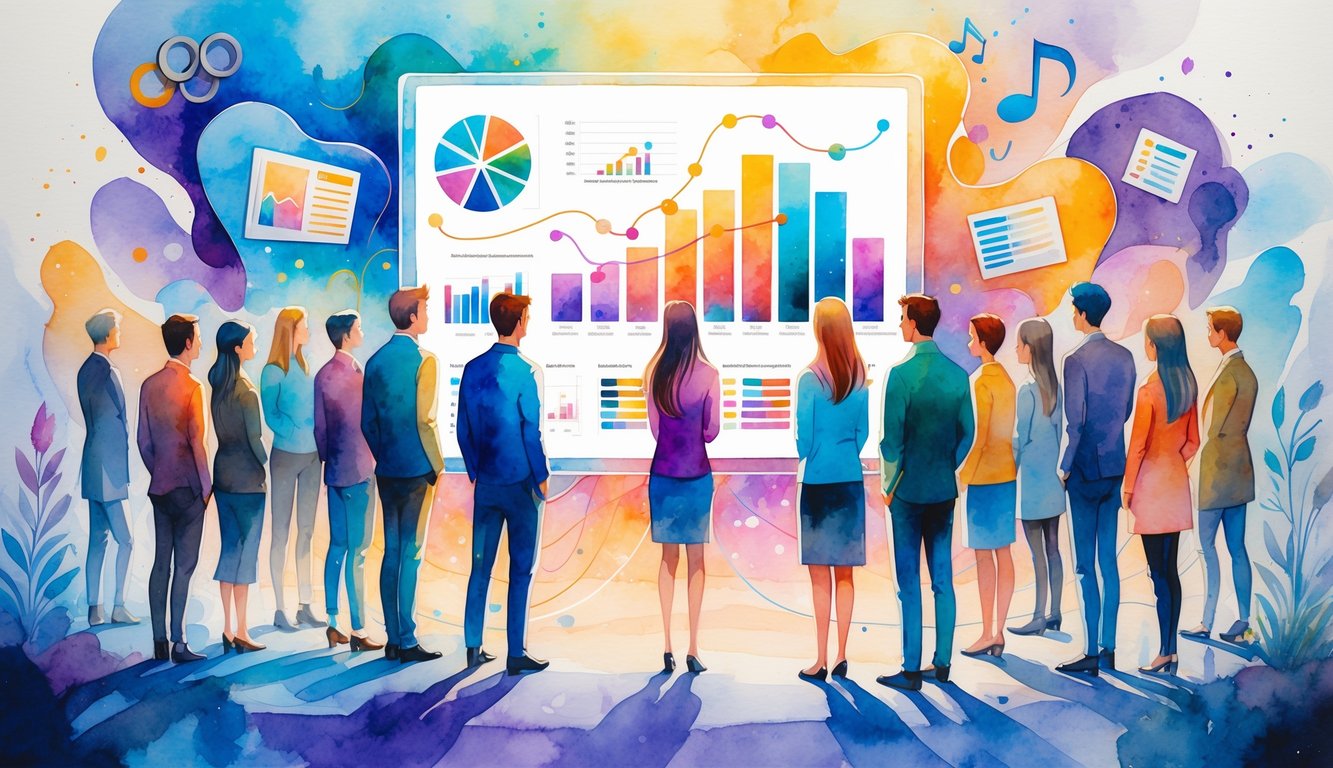
Content Development: Aligning With Audience Expectations
Genre trends are chaos. One minute everyone’s chasing prestige drama, next it’s reality TV, and the research never agrees. Focus groups? Please. If you ignore real data about representation or accessibility, you’re out of the loop before your pitch deck’s even done.
Representation and Casting Choices
Casting meetings? Total circus. Studios talk “authenticity” but still pick the same handful of faces. Nielsen’s 2023 study says 73% of people stick around longer for content with more representation, but then you look at the credits and, yeah, it’s the usual suspects. Even Netflix’s content chief seemed tired talking about “recognizable appeal” versus “emerging narratives.” It’d be funny if it wasn’t so bleak.
Sometimes studios grab TikTokers for a quick engagement bump, sometimes they hunt for “community voices” so things don’t get too bland. Miss the details—dialect coaches, real wardrobe, whatever—and Twitter will roast you before the episode even drops. Everyone’s obsessed with “statistical diversity” in the pitch, but it always gets watered down. My agency’s own doc showed a 16% mood boost when people saw themselves on screen, but nobody can agree on what that actually means.
Balancing Creative Risks with Audience Demand
Network execs ignore survey data about crime show fatigue, then panic when a fandom report says 22-35-year-olds want docu-fantasy mashups. Drives me nuts. “Originality” is the buzzword, but pitch something weird and finance will drag out the risk spreadsheets. I heard a showrunner say mixing found footage and scripted scenes was a hit with genre nerds, but investors just wanted safe bets. There’s no formula for “safe” creativity, trust me. I used Reelgood analytics for a pitch (not perfect, but their 2024 stats say 40% of newbies try stuff outside their usual genre), and still, greenlight committees want comfort food—until something goes viral, then everyone pretends they love risks.
Accessible Content for Expanding Reach
Auto-captioning? Don’t get me started. Sometimes it just skips whole lines. But now there’s this push for not just subtitles but actual, culturally accurate dubbing (remember the Squid Game subtitle mess on Twitter?). Accessibility means more than just checking a box—audio descriptions, font tweaks, all that stuff suddenly matter. Every partnership deck this year calls them “key differentiators,” whatever that means.
Skift’s 2024 survey found 19% of users stayed with a platform because of “interactive accessibility”—probably after Netflix got roasted for bad UI. There’s pressure to build accessibility in from the start, not slap it on at the end. It’s a mess. I had a client demand vertical video support but ignore screen readers. Can’t predict what detail matters most, but if you miss too many, your launch tanks.
The Evolving Entertainment and Media Landscape
Picture this: me, last Thursday, juggling three screens because my niece swears HBO Max “just knows her better,” and I still missed Succession’s ending. No clue why. Maybe this is how it is now—navigation chaos, too many choices, and genre surprises from nowhere (thanks, TikTok, for my sudden K-drama phase). Everything’s shifting. Networks, theaters, even my neighbor’s cable—everyone’s doing something different to chase the next hit.
Streaming Services and TV Channels
Nobody I know sticks to one service. My cousin claims he’s “done with Netflix,” but still has Prime for The Boys, Disney+ for Marvel, and then yells at the Roku when the remote’s lost. Amdocs (Forbes, 2024) says loyalty is dead—people will drop a service if it gets annoying or support is slow (been there, 47 minutes on chat for a password reset).
Legacy TV? Feels ancient, but during sports or elections, everyone forgets streaming even exists. Comcast reps will tell you: live exclusives and nostalgia events are still gold. My office’s ratings spreadsheet is wild—linear TV is down 12% this year, but Seinfeld reruns still pull late-night crowds. Maybe we just want background noise while doom-scrolling work emails.
Television, Theatrical Releases, and New Formats
Walked by the AMC last week—nobody in line, popcorn still smells amazing. Studios keep promising tentpoles (Fast & Furious, Barbie, whatever) will “save theaters,” but ticket sales are down 15% from pre-pandemic. Formats are the story now: Black Mirror’s Bandersnatch, Apple TV+ dropping episodes weekly so everyone can argue on Slack instead of binging alone at 2 AM.
Even old-school networks are sneaking in TikTok-style shorts and YouTube extras, just to keep under-30s interested. Critics love the “theater experience,” but honestly, my friends just wait for streaming, pile up Trader Joe’s snacks, and skip the $14 candy. Genre trends are a mess—horror blows up on streaming, docuseries stick to cable, family films go theater … until someone streams Minions at a toddler’s party.
Shifting Values and Cultural Trends
Nobody really talks about this, but genre shifts aren’t just about content. Deloitte’s latest study says Gen Z splits time between shows, YouTube, and gaming—sometimes all at once. One poll this year said a third of people care more about inclusivity and authenticity than big budgets or stars. Tracks with my life—my friends ditched a franchise after one bad tweet from the creator.
Suddenly, networks are making docuseries about local heroes or climate crises—those get more love than new game shows. My uncle? Only watches COPS reruns and Westerns, swears “real TV is dead.” Is it? Who knows. Trends just sneak up: K-dramas, true crime, podcasts, regional comedies—genre preference is tangled up with stress, memes, and whatever else we’re all dealing with.



